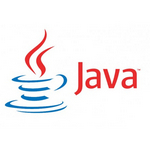随着互联网技术的发展,多线程编程的重要性越来越凸显出来。在编写高并发程序时,充分利用多线程技术可以大大提高程序的执行效率。然而,多线程编程本身就涉及到许多问题,例如线程间的通信、同步协作等。为了解决这些问题,java提供了许多线程池框架,其中executorcompletionservice是其中之一。本文将介绍executorcompletionservice的用法以及如何使用该函数进行线程池任务调度。
一、ExecutorCompletionService的概述
ExecutorCompletionService是一个Java中的Executor框架的扩展,其维护了一个线程池来执行一组异步任务,并将这些任务的结果保存在一个队列中。ExecutorCompletionService使得我们可以在完成的任务中获取结果。ExecutorCompletionService提供了一个Future
ExecutorCompletionService的主要优点在于它减少了等待所有任务完成的时间。当一个任务完成时,我们可以立刻获取它的结果,而不需要等待其他任务全部完成。这样,我们可以尽早处理已完成的任务,而不需要等待所有的任务都完成后再来处理它们。这种方式可以有效地提高程序的执行效率。
二、ExecutorCompletionService的用法
立即学习“Java免费学习笔记(深入)”;
在使用ExecutorCompletionService时,我们需要首先创建一个ExecutorService对象。ExecutorService是Java中的线程池框架,它可以维护一组线程来执行一系列任务。我们可以使用Executors类提供的工厂方法来创建ExecutorService对象。下面是创建一个ExecutorService对象的示例代码:
1 |
|
这里创建了一个大小为10的线程池。
接下来,我们创建一个ExecutorCompletionService对象,使用它来提交任务到线程池中:
1 2 3 4 5 6 7 8 |
|
这里用一个for循环提交了10个任务,每个任务都是一个Callable类型的对象。在这个示例中,我们使用Lambda表达式来创建Callable对象,这是Java 8中引入的一种新特性。
在submit方法中,我们传入了一个Callable对象,在这个Callable对象中执行了一个假定的“任务”,并返回了一个结果。在实际的业务场景中,这里可以进行实际的数据处理、网络请求等操作。
在提交完任务之后,我们可以使用take方法来获取已完成的任务的结果:
1 2 3 4 5 |
|
这里用一个for循环获取已完成的任务的结果,调用take方法可以获取一个Future对象,使用get方法可以获取任务的结果。这里将结果输出到控制台上。
三、线程池的性能调优
除了使用ExecutorCompletionService来简化任务提交和结果获取的过程外,我们还需要考虑线程池的性能调优。线程池中的线程数和队列的大小都会对程序的性能产生影响。
直接增加线程数会导致两个问题:一是线程之间的上下文切换会增多,这会影响程序的性能;二是线程池中的线程很容易消耗完系统资源,导致系统负载过高,出现OOM等问题。因此,我们需要根据实际的业务场景来调整线程池的大小。
队列的大小直接影响线程池的并发处理能力。如果队列的大小过小,将会导致线程池执行的速度非常快,并很快消耗系统资源;如果队列的大小过大,将会导致线程池执行的速度非常慢,无法保持程序的高效性。因此,我们需要根据实际的业务场景来调整队列的大小。
总之,线程池的性能调优需要根据实际的业务场景来进行。简单地增加线程池的大小和队列的大小并不能保证程序的高效性,我们需要根据实际情况来进行调整。
四、结论
本文介绍了Java中的ExecutorCompletionService函数的用法,以及如何使用该函数进行线程池任务调度。通过ExecutorCompletionService,我们可以更加方便地提交任务和获取任务的执行结果,从而提高程序的执行效率。同时,本文还简单介绍了线程池的性能调优,以帮助我们更好地优化我们的代码。
以上就是如何使用Java中的ExecutorCompletionService函数进行线程池任务调度的详细内容,更多请关注php中文网其它相关文章!

java怎么学习?java怎么入门?java在哪学?java怎么学才快?不用担心,这里为大家提供了java速学教程(入门到精通),有需要的小伙伴保存下载就能学习啦!

Copyright 2014-2025 https://www.php.cn/ All Rights Reserved | php.cn | 湘ICP备2023035733号